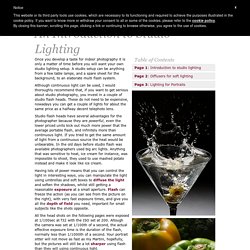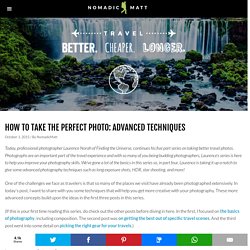

10 rules of photo composition (and why they work) Poor photo composition can make a fantastic subject dull, but a well-set scene can create a wonderful image from the most ordinary of situations.

With that in mind, we've picked our top 10 photo composition 'rules' to show you how to transform your images, as well as offered some of our best photography tips from the experts who do it on a daily basis. Don't feel that you've got to remember every one of these laws and apply them to each photo you take.
Instead, spend a little time practising each one in turn and they'll become second nature. You'll soon learn to spot situations where the different rules can be applied to best effect. It doesn't have to be complicated Photo composition doesn't have to be complicated. In the real world, you'll be working with a wide range of subjects and scenes, and this requires a more open-minded approach. The key thing is to understand how all the decisions you make about composition can affect the way a shot looks and how people perceive your photos. 77 photography techniques, tips and tricks for taking pictures of anything: Portrait photography techniques, tips and tricks.
Tip 1.

Focus on the eyes While eye contact is not always desirable in a portrait, sharp eyes certainly are. Manually select an AF point that's positioned over one of your model's eyes, or use the central focus point to lock focus on their eye. Then, with the shutter release half-pressed to keep the setting locked, recompose your picture before taking the shot. Tip 2. Wide-angle lenses are a great choice for photographing environmental portraits, where you want to show a person within a specific context. A better choice for portraits is either a standard lens or a short telephoto lens. These will help to compress features and provide a more natural-looking result. Tip 3. Aperture Priority gives you direct control over the aperture, and as a result the depth of field (DOF).
Advanced Photography Tutorials. An Introduction to Studio Lighting. Once you develop a taste for indoor photography it is only a matter of time before you will want your own studio lighting setup.

A studio setup can be anything from a few table lamps, and a spare sheet for the background, to an elaborate multi flash system. Although continuous light can be used, I would thoroughly recommend that, if you want to get serious about studio photography, you invest in a couple of studio flash heads. These do not need to be expensive, nowadays you can get a couple of lights for about the same price as a halfway decent telephoto lens. Studio flash heads have several advantages for the photographer because they are powerful, even the lower priced units kick out much more power that the average portable flash, and infinitely more than continuous light. If you tried to get the same amount of light from a continuous source the heat would be unbearable. All the head shots on the following pages were exposed at 1/100sec at f32 with the ISO set at 200. Lighting Flash. D500 TIPS - Sports AF: Custom Control Assignments. Nikon Professional Services.
Flickr. Goodbye, Rule of Thirds? Alternative Methods to Master Composition. How to Take the Perfect Photo: Advanced Techniques. Today, professional photographer Laurence Norah of Finding the Universe, continues his five part series on taking better travel photos.

Photographs are an important part of the travel experience and with so many of you being budding photographers, Laurence’s series is here to help you improve your photography skills. We’ve gone a lot of the basics in this series so, in part four, Laurence is taking it up a notch to give some advanced photography techniques such as long exposure shots, HDR, star shooting, and more! One of the challenges we face as travelers is that so many of the places we visit have already been photographed extensively.
In today’s post, I want to share with you some techniques that will help you get more creative with your photography. These more advanced concepts build upon the ideas in the first three posts in this series. (If this is your first time reading this series, do check out the other posts before diving in here. Long-exposure photography Shooting the stars. National Geographic Guide to Photography. National Geographic Travel Photography Tips. Each place we visit has its own particular look, character, and ambiance.

If we want photographs of our travels to be good and lasting, they should capture all of these qualities, and say as much about a place as give the literal look of it. We are unlikely to long remember the smell and buzz of a flower garden in spring, the awe of gazing for the first time at the mountain we intend to climb, the caress of a tropical breeze, the thrill of a huge roller coaster, the wonder of our first wild bear, or the adrenaline of rafting white water. Remove Background from Image – remove.bg. What Photographers are NOT Considering When Using High ISO. Worldwide Tourist.